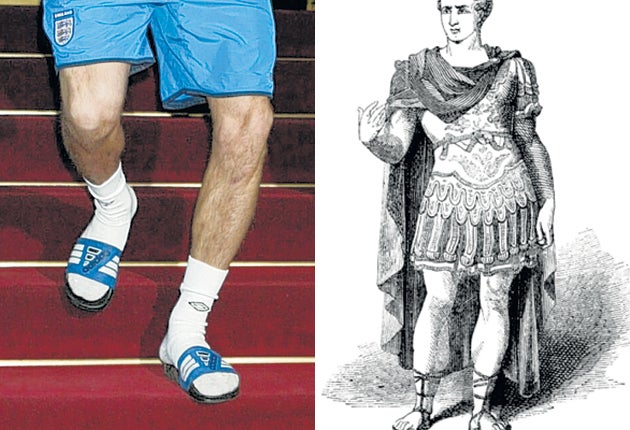What have the Romans ever done for us (socks and sandals excepted)?

Your support helps us to tell the story
From reproductive rights to climate change to Big Tech, The Independent is on the ground when the story is developing. Whether it's investigating the financials of Elon Musk's pro-Trump PAC or producing our latest documentary, 'The A Word', which shines a light on the American women fighting for reproductive rights, we know how important it is to parse out the facts from the messaging.
At such a critical moment in US history, we need reporters on the ground. Your donation allows us to keep sending journalists to speak to both sides of the story.
The Independent is trusted by Americans across the entire political spectrum. And unlike many other quality news outlets, we choose not to lock Americans out of our reporting and analysis with paywalls. We believe quality journalism should be available to everyone, paid for by those who can afford it.
Your support makes all the difference.They gave the world decent roads, indoor plumbing and some of the goriest spectator sports known to man, but now it appears that the Romans made a hitherto secret contribution to global civilisation by pioneering the wearing of socks with sandals.
It is a look which in recent years has become popularised – if that is the right word – by off-duty geography teachers and embarrassing dads, yet new archaeological evidence suggests that the Romans' famous Italian stylishness may have been ditched to help the colonists cope with the chilly British climate.
Excavations carried out as part of the upgrading of the A1 between Dishforth and Leeming in North Yorkshire have found that rust on the nail in a Roman shoe appeared to bear the impressions of fibres, enough to convince archaeologists that the invaders sported sock-like garments.
The discovery was made at what is believed to have been an ancient industrial estate, including a water-powered mill used to grind flour and grain, close to the site of a forgotten fort at Healam Bridge, which formed part of the Roman frontier 2,000 years ago.
It is believed that the area would have supplied the garrison with provisions before becoming a fully established settlement in its own right.
The Roman road of Dere Street follows much of the route of the modern A1. Cultural heritage team leader Blaise Vyner said the discovery of the fort was likely to tell us more about everyday Roman life in Britain.
"We know a lot about Roman forts, which have been extensively studied, but to excavate an industrial area with a mill is really exciting. We hope it can tell us more about how such military outposts catered for their needs, as self-sufficiency would have been important," he said.
The invaders first landed in Britain in 55BC and again the following year, led by Julius Caesar, the general who had been fighting the Gauls in France.
However, his attempts were thwarted, and it fell to the Emperor Claudius in 43AD to finally deliver on the Romans' long-held ambition of pacifying the problematic Iron Age tribes of Britannia. He ordered 40,000 troops to cross the Channel, bringing much of the country under central control for the first time. The Romans remained in Britain for the best part of the next four centuries.
During this period many of the Romans, who were often from the sunny parts of modern day France and Italy, struggled to cope with the harsh realities of the British climate, especially those billeted in the North.
Letters have been recovered from a garrison at Hadrian's Wall have revealed officers and their men begging family back home to send them extra subuclae (vests) and abollae (heavy cloaks).
Another soldier urged his loved ones to send him "Paria udonum ab Sattua solearum duo et subligariorum duo" which translates as "socks, two pairs of sandals and two pairs of underpants".
The latest evidence corroborates the socks and sandal theory which first emerged when a Roman copper razor handle was recovered from the Tees near Darlington. It was in the shape of a foot adorned with an open-toed sandal and woollen sock.
Ironically, the much-maligned look has been making something of a comeback on the international catwalks this summer, with designers from Burberry to Dior all producing variations on the theme.
So perhaps the Romans were right all along.
Join our commenting forum
Join thought-provoking conversations, follow other Independent readers and see their replies
Comments